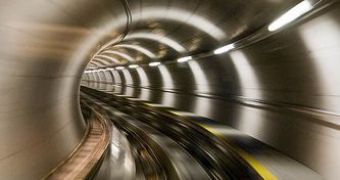Motion sickness can happen to most people, whether they are in a car, a train, an airplane or sailing on a ship. NASA researchers however say that it is all a matter of mind control. The agency is currently testing a new method, meant to help astronauts adjust to microgravity.
Spaceflight has the same effect on cosmonauts as motion sickness has on regular people, that become nauseous, dizzy or actually faint when they are in a way of transportation. Millard Reschke, chief of neuroscience at NASA's Johnson Space Center in Houston says that this is really a problem. “The incidence (of motion sickness) is extremely common. It occurs on every form of transportation - even riding camels.”
Statistics say that about 70 to 80 percent of the astronauts experience space sickness. There are drugs against it of course, but they generate side effects like sleepiness and a lack of mental acuity and this is obviously a problem when working in space.
Psychologists from the space agency wondered if this space sickness could be controlled by the astronauts themselves. Thus, they developed a six-hour anti-motion sickness program, called the Autogenic Feedback Training Exercise, to help astronauts learn how to regulate their heart rates, respiration and other body functions.
For once, having test subjects was no so easy because the training had to make them sick enough on rotating chairs so that they could practice controlling their body, and not many wanted to participate. “These things we thought that we could not control, we just never learned how to. This system holds up a mirror. You're seeing your own biology,” says Mae Jemison, a former shuttle astronaut now running a company developing commercial applications for the technology, like improving athletic performance or limiting fear of public speaking.
Another agency that began testing this program is the US Navy, in an attempt of giving a chance to promising pilots and flight crew with a tendency of suffering from air sickness. Lead researcher Patricia Cowings of NASA's Ames Research Center in California, says that they expect to work with at least 15 to 20 people on this.
People taking part at this experiment will have heart rate and respiration sensors as well as other monitoring systems and they will learn how to induce sensations that are associated with certain physiological responses.
In a summary of the Navy study, NASA notes that after the six-hour training program, 80 percent of the participants enhanced their motion sickness tolerance, ABC Science relates.

 14 DAY TRIAL //
14 DAY TRIAL //